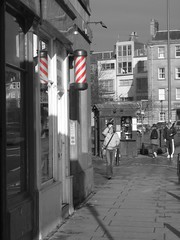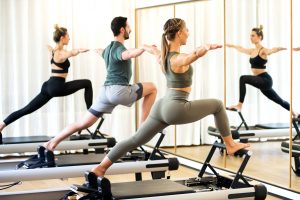
Case Study: Carol, the Hairstylist
Carol was diagnosed by Dr. Timothy J Jameson with injury to her cubital tunnel. Basically, her ulna nerve was entrapped in her elbow. She experienced pain over several months, particularly after full days in the salon. Any bump in the affected region brought severe pain down the arm and into her hand. Her hairdressing technique was evaluated. It revealed that
Carol routinely worked with the elbows elevated above the shoulders and a hunched back. Treatment included chiropractic sessions and myofascial release for chronic pain and inflammation, which eased. Her postural problems continued to cause recurrences.
Carol received the suggestion to increase her awareness of deeply ingrained and harmful postural patterns. Carol's wellness plan would have benefited greatly from Pilates.
As a stylist and Pilates teacher, it is apparent to me that the manual tasks of hairdressing aren't leading to injury in this case, the poor postural habits are.
A skilled Pilates teacher can help assess a stylist's posture and alignment and provide a specific program to address postural deviations. Pilates isn't just about Hollywood and sculpted abs. Beautiful forms and sculpted abs are desirable but they are not the whole story. From its earliest conception,
the Pilates method has been valued for its rehabilitative and restorative ability. As the body is developed uniformly, correct posture, physical vitality and a lifted spirit follow. All these are essential to a stylist's productivity and well being.
If you are experiencing injury or disability, talk to your doctor about Pilates as a part of your wellness program. If you would like to prevent injury or disability, look to future posts for vital information aimed at helping you stay healthy.
Investigate Pilates that is offered in your local area or contact Pilates For Stylists for assistance.




























